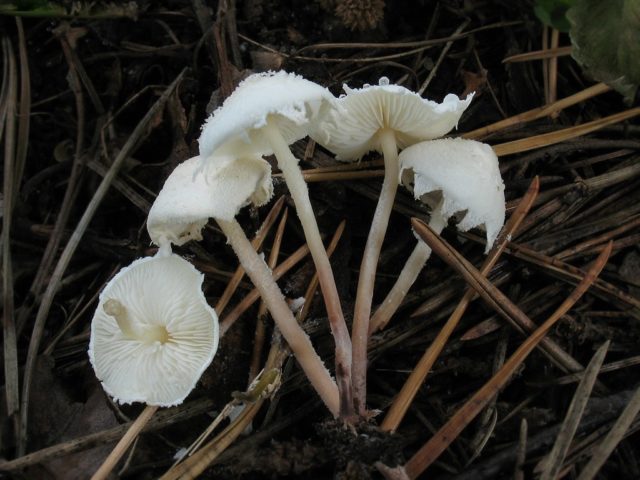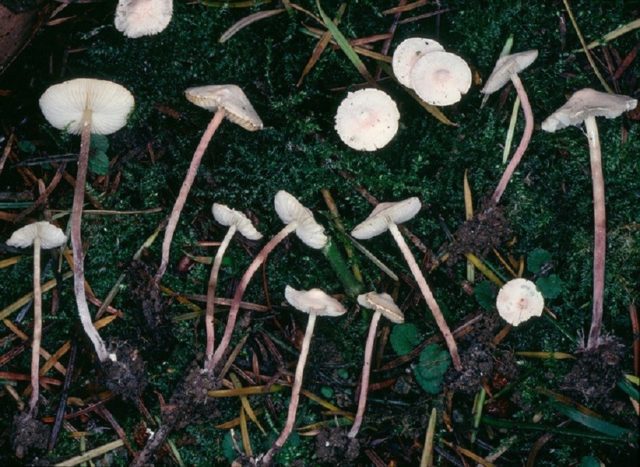Content
Cystolepiota seminuda is a member of the Agaricaceae family, the genus Cystolepiota. It belongs to the common species, it is considered not widespread and rather rare. It is because of their small size that these representatives rarely catch the eye of mushroom pickers.
What cystolepiota Seminuda looks like
Seminuda cystolepiota is a very small mushroom. The diameter of the cap reaches no more than 2 cm. In a young specimen, it has a rounded-conical shape, covered from below with a dense, slightly granular blanket. As it grows, the cap straightens out and takes on a wide-conical or convex shape with a pronounced tubercle in the center. A mature specimen has a spread cap with a low blunt tubercle in the middle, while the remains of the bedspread completely disappear. The color is white, after which a pink or fawn shade appears in the center.
Plaque on the surface of the cap also changes. A young specimen has a flaky structure, then it is replaced by a granular one, and then disappears altogether, leaving the surface completely smooth and bare.
Under the cap one can see often located, thin, rather narrow, free plates. Their color is creamy or slightly yellowish. Spores in the mass have a white tint.
The leg can reach up to 4 cm, while it is very thin, with a diameter of only 0.2 cm. Its shape is cylindrical, straight, rarely curved. The inside of the leg is hollow, the outside is smooth with a delicate granular coating, which also disappears with age. Its color is darker than the cap and varies from yellow-pink to fawn. At the base, the leg is reddish or slightly gray in color.
The pulp of the fruiting body is very thin and fragile. On the cut, the caps are white, the legs are pinkish. Has little or no aroma or gives off an unpleasant potato odor.
Where do the cystolepiota of Seminuda grow
The cystolepiota Seminuda mushroom belongs to a rare species, but growing everywhere in almost the entire territory of Russia. Prefers deciduous and mixed forests. It grows in fallen leaves or among branch, coniferous litter.
The fruiting period is between July and September. Grows in groups, fruiting bodies rarely grow singly.
Is it possible to eat cystolepiota Seminuda
There is no reliable information about the edibility of the cystolepiota of Seminud. Eating cases have also not been confirmed. Therefore, this type of mushroom is classified as inedible.
Conclusion
Seminuda cystolepiota is a very remarkable fungus, which can be distinguished from similar small-sized porcini mushrooms by the presence of scraps of a bedspread in the form of triangular teeth along the edge. But it is precisely the small size that nevertheless makes this species almost invisible to the human eye.










